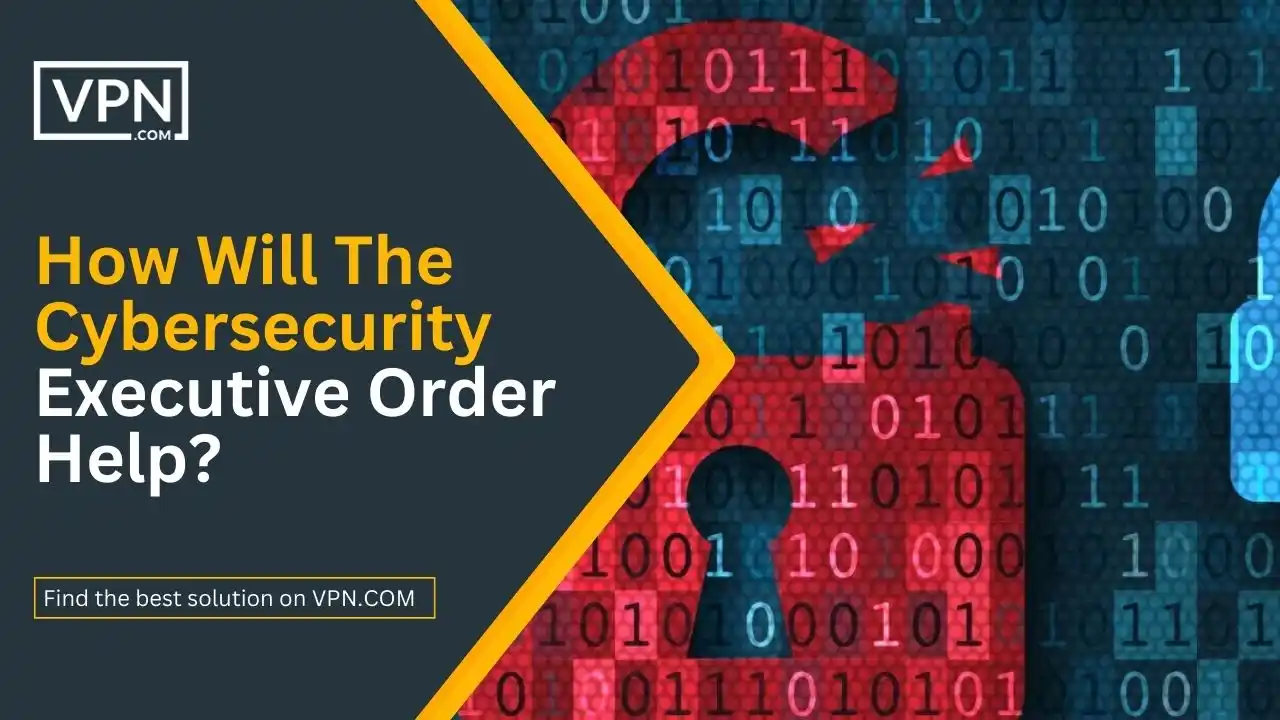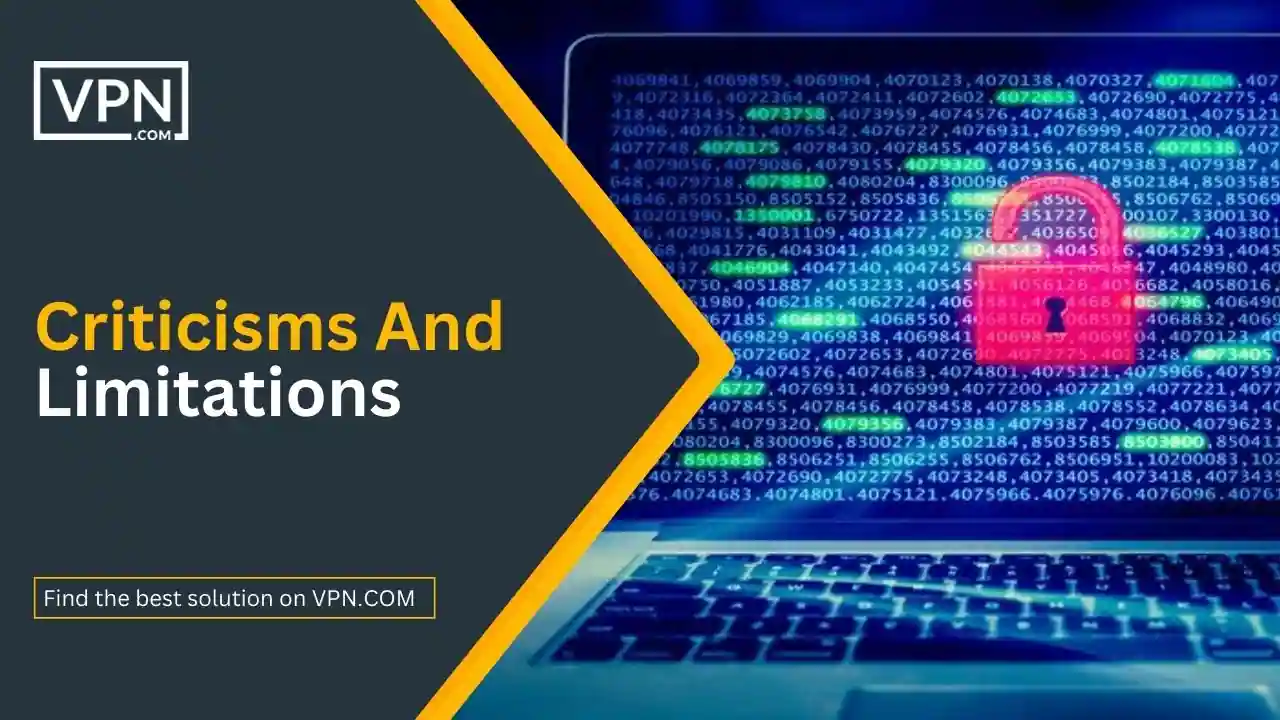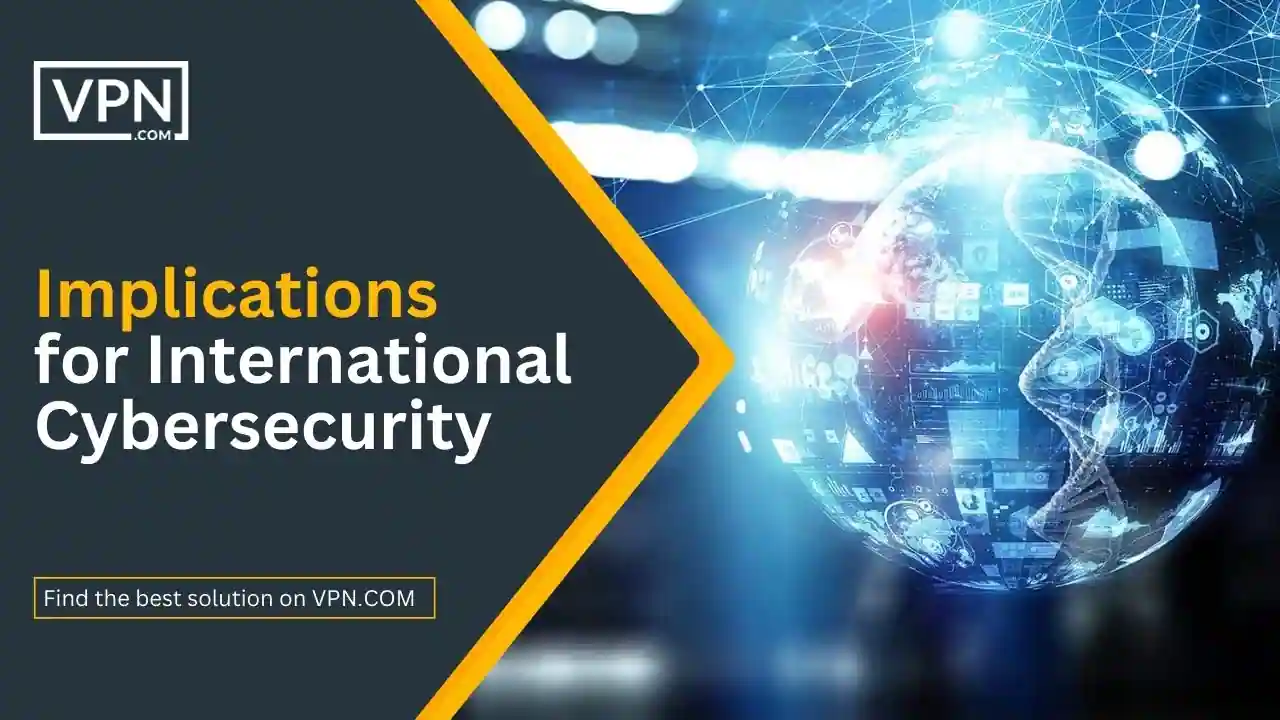America’s Cybersecurity Executive Order

In today’s digital world of the internet, there are a lot of threats to your official and personal data. Hence you need to be more smart about your choices concerning the security of your precious data and information. Cyber threats pose highly damaging risks to national and economic security nowadays.
To establish America’s cybersecurity defenses and make it more strengthened, the Biden administration recently issued a landmark executive order outlining new requirements and initiatives federal agencies must prioritize. This order has been given specifically to dramatically modernize cyber protections. It also helps in resilience against sophisticated and unauthorized attacks that threaten government data, critical infrastructure, and citizens’ sensitive information. Hence, this order has been granted to make your official data secure from the prying eyes of attackers.
What Is America’s Plan To Improve Cybersecurity?

On May 12th, 2021, President Biden signed a major executive order titled “Improving the Nation’s Cybersecurity“. This directive kickstarts numerous cybersecurity modernization projects across federal government bodies and vendors. It mandates extensive changes to replace outdated systems, centralize authority, expand threat monitoring, safeguard supply chains, and facilitate improved information sharing between public and private sector entities.
What Are The 6 Pillars Outlining The Administration’s Plan?
The order contains over 6 key pillars outlining the administration’s grand plan to enhance cyber protections including:
- Removing barriers to threat information sharing between government and private companies
- Modernizing federal systems and networks to prioritize modern cybersecurity best practices
- Enhancing software supply chain security for purchased IT solutions
- Creating unified cyber response incident playbooks
- Issuing baseline security standards for government contractors
- Recruiting top cybersecurity talent into government
With the frequency and impact of attacks increasing, these actions aim to fundamentally overhaul vulnerable legacy architectures across public sector organizations. By mobilizing resources at scale, America intends to match Russia’s, China’s, and rogue hackers’ growing digital capabilities.
How Will The Cybersecurity Executive Order Help?

The wide-ranging executive order institutes specific cybersecurity enhancement programs targeting federal agency practices, contractors, technology supply chains, and information sharing:
Strengthening Federal Agency Cybersecurity
Many government technology systems are extremely old and never updated to have secure settings turned on automatically in the ways modern online services do. This leaves dangerous openings for hackers. Biden’s order forces agencies to modernize these outdated systems by adding multi-factor logins so passwords aren’t the only protection, encrypting data so info is useless if stolen, installing security updates faster to fix known problems, and using new scanning tools to better see suspicious activity across networks. Think of it as finally dragging essential but vulnerable government digital infrastructure into the 21st century security-wise.
Improving Contractor and Service Provider Cybersecurity
Private companies that provide IT services to government bodies have not always had to follow strict cybersecurity rules in the past.
However, breaches at contractor firms often compromised federal data anyway. The executive order now requires minimum cybersecurity standards that vendors must meet before winning government contracts.
It also forces contractors to report hacks or breaches involving any public sector information they handle. Lastly, security tools will integrate more tightly between agencies and contractors to better share threat warning signs in both directions.
Enhancing Supply Chain Security
The government buys a massive amount of IT hardware and software each year without a deep understanding of cyber risks within complicated, globalized supply chains underneath. This order forces much more careful examination of the individual companies providing hardware parts, software code, and delivery processes to uncover potential weaknesses nation-state hackers could secretly take advantage of by breaking into a supplier computer undetected, for example. Centralizing this supply chain risk assessment reduces the chances of security gaps.
Promoting Information Sharing and Collaboration
In past years, private companies have faced major legal hurdles trying to share quickly evolving hacker threats or security breach data with various government groups; even those focused entirely on cyber defense. Similarly, government cybersecurity units could not easily share certain classified threat intelligence back with trusted technology firms most impacted. By modernizing data sharing rules on both sides, everyone can now access the most timely, detailed threat data possible leading to faster protections. This is a big upgrade.
Together, these key directives will drive billions in new federal cybersecurity spending to uplift defenses based on widely endorsed best practices. The changes mark a turning point in finally tackling escalating digital threats, jeopardizing national security and citizens’ interests after years of seeping vulnerabilities going unaddressed.

Get Started w/ NordVPN Today
- Top-rated VPN for OS unknown
- Ultra-fast speed in US in 2024
- Save 69% off with VPN.com Discount
- Plans starting at $2.99/month
GUARANTEE
Implications For Federal Agencies And Contractors

The expansive order will significantly impact federal agencies and government contractors in the years ahead across areas like staffing, budgets, and vendor relationships.
- For agencies, additional funding aims to spur extensive legacy overhaul projects. It replaces antiquated networks, mainframes, and critical applications not designed for modern security. Investment prioritizes identity and access management, micro-segmentation, and advanced threat analytics via security operations centers.
- The required adoption of Zero Trust and supporting training will further strain understaffed security teams struggling with overworked specialists and talent shortages. However new coordinated incident response plays, cyber workforce databases, and cross-agency collaboration initiatives offer pathways to magnify resource constraints through better planning.
- The orders also remove lengthy delays in absorbing threat intelligence from law enforcement and intelligence partners. Requirements to use shared services for select capabilities and reports on budgets signal greater centralization.
- For contractors, newly established security baselines closing previous standardization gaps introduce more rigorous certification processes that will likely increase proposal costs. However, greater collaboration opportunities help vendors tailor offerings to emerging requirements early.
- Mandated data breach and incident reporting processes may benefit smaller providers lacking robust programs historically. However, elevated standards ensure certified security postures, reducing the probability of award delays or disqualifications. Tighter alignment on risk assessments will require adjustments for contractors as government methodology diverges from industry frameworks.
- While higher overhead is certain in the short term, the order fosters stronger public-private security coordination as adversaries grow more advanced.
Supply Chain Security Measures

Global technology supply chains introduce manifold cyber risks yet remain largely opaque. The executive order specifically targets enhanced scrutiny across software and hardware sources and delivery both domestically and internationally via:
Software Supply Chain Security
The government buys a ton of commercial software like Microsoft Office or enterprise solutions for managing payroll, documents, email, and other critical functions. However, agencies historically didn’t investigate the security of this vendor-created code very deeply before purchasing. This order mandates much more review of the security ownership, testing, maintenance, and transparency around potential weaknesses in third-party software.
Centralizing this code assessment stops different agencies from each having fragmented and inconsistent reviews that allow risks to hide within complex vendor software ecosystems.
Hardware Supply Chain Security
Sophisticated computer chips and electronics components like routers or servers used by the government contain many complex pieces from a global web of manufacturers and shippers that are hard to fully trace. By expanding oversight of the hardware supply chain flows through production, distribution, and transit, the odds of spotting tampering or fake components inserted to facilitate cyber espionage by adversary nations expand dramatically thanks to wider electronic inspection capacities at customs and postal facilities.
Critical Infrastructure Supply Chain Security
Threats that could disrupt the consistent flow of equipment maintaining crucial power grids, water systems, hospitals, and other essential services represent catastrophe potentials. Because much of this infrastructure relies on specialized hardware/software vendors, new national security standards will press suppliers of these sectors to implement much stronger continuity protections.
Data sharing around reliability to minimize outage risks that would debilitate society in attacks against these sensitive chains.
International Supply Chain Security
Expanding authority to impose exclusion orders or enhanced import screening on high-risk imports from adversary nations provides import controls lacking around exported networks and IoT gear to protect national interests.
Attacks targeting trusted technology fueling society increase integrity requirements on both public and private sector entities. By removing previous barriers, the US can institute resilience across exponential scales.
Information Sharing Initiatives

In the ongoing cyber war, information equates to power. Breaking down historic barriers around classified threat data sharing between government, critical infrastructure, and technology providers can exponentially improve risk awareness and prevention nationwide via the Cybersecurity Information Sharing Act.
Collaboration Environments
The order seeks to accelerate programs facilitating actionable threat intelligence distribution to and from relevant private entities by creating wider “collaboration environments” at lower clearances. Partners receive access to anonymized and tailored early warnings of attacks in exchange for critical incident data.
New technology investments
New technology investments also expand the ingestion of open source indicators from global incidents to derive analytics on emergent adversarial tradecraft far faster, leveraging AI, allowing warnings to users of targeted software before in-the-wild attacks materialize.
Tear-lines
Automating tear lines significantly increases the volume of data agencies can produce from classified sources to certain industry partners. It connects dots only so governments can see.
Intake Of Raw Threat
Expanded intake of raw threat feeds from companies in return allows federally backed cyber centers to refine detections for the private sector, bolstering resilience industry-wide to sophisticated threat actors. By mobilizing wider eyes and resources collectively, gleaning insights faster benefits all parties through shared early vexation.
Criticisms And Limitations

While security experts applaud the order’s ambition to address years of cybersecurity deficits, several limitations persist that may dilute execution and impact:
Lack Of Enforcement Mechanisms
Absent congressional legislation enforcing compliance, the order risks toothlessness if agency heads deprioritize mandates amidst other political priorities. Critics argue only penalties compel action given extreme deficiencies across authorities. Instead, the order is currently outpacing more desperately needed regulations with penalties.
Limited Scope
Although expansive, the orders lack specificity around metrics to evaluate effectiveness and focus predominantly on federal networks rather than compiling nationwide cyber protections. Without measuring progress or requiring some blanket security adjustments economy-wide, improving national resilience remains incomplete.
Insufficient Funding And Resources
Past initiatives faltered as grand visions exceeded appropriated funding, leaving complex overhauls chronically under-resourced. Critics highlight Congress must allocate sufficient technology, staffing, and contractor funding to actuate the mandated vision and timelines under the order rather than peripherally addressing issues.
Need For Additional Cybersecurity Measures
Activists argue comprehensive consumer data protections or infrastructure security standards still lag overseas. Until personal privacy receives similar policy prioritization, critics say executive orders only partially address underlying issues enabling chronic data breaches. Further legislation around national data protection and critical infrastructure security controls remain overdue many argue.
While the orders enable seismic policy shifts, successful execution remains contingent on sustained government and legislative follow-through injecting adequate focus, authority, and funding toward realizing measurable security enhancements.
Implications For International Cybersecurity

As the cybersecurity executive order, US policy ripples worldwide. The executive order accelerates global cybersecurity convergence by exporting new cybersecurity norms championed but hitherto not formalized under previous administrations.
Multi-factor Authentication
Mandatory multi-factor authentication, endpoint detection, encrypted data protections, and automated access reviews set technology baselines for global partners to embrace. Codifying zero trust models, which have been long debated, influences global architecture priorities, as seen through partners in Asia adopting similar models thereafter.
Infrastructure Protection,
Prioritizing action orders around critical infrastructure protection, controlled international supply chains, and coordinated incident response establish policy contours adopted by NATO and G7 country summits, which vow similar initiatives for multilateral cooperation.
Information Sharing Improvements
Information-sharing improvements ease the exchange of threat intelligence with Five Eyes allies to bolster global prevention against destabilizing attacks that ignore borders in our interconnected economy.
Cyberattacks
With cyberattacks exponentially escalating worldwide, the executive order provides effective blueprints catalyzing bolder resilience initiatives internationally by illuminating deficiencies policymakers abroad must now address with similar urgency.
FAQs
How does the executive order improve private-sector cybersecurity?
By expanding real-time threat information sharing, driving common security standards into contracts, requiring incident notification processes, and enhancing technology supply chain protections.
What tools help federal agencies elevate legacy systems security?
Additional funding focuses on multifactor authentication, data encryption, micro-segmentation, and zero trust to shore infrastructure and software development weaknesses.
How does the order impact government contractors?
Minimum security requirements for vendors increase compliance overheads but boost security posture consistency and transparency around incidents impacting government data via new response processes.
What supply chain threats does the order target?
Enhanced domestic monitoring and expanded import exclusion abilities aim to reduce hardware counterfeits. Software transparency requirements uncover ownership or maintenance issues, creating risks. New critical supply continuity standards also help avoid infrastructure outages.
How will effectiveness be measured?
While lacking specifics, the order requires agencies to establish metrics evaluating rollout progress across requirements like multifactor usage, breach reductions, threat data sharing participation, and security operations center maturity improvements.

Get Started w/ NordVPN Today
- Top-rated VPN for OS unknown
- Ultra-fast speed in US in 2024
- Save 69% off with VPN.com Discount
- Plans starting at $2.99/month
GUARANTEE
The Bottom Line
In conclusion, the wide-ranging Biden cybersecurity executive order marks a major milestone in addressing escalating threats to national security, public infrastructure, and personal data. By securing legacy architecture, expanding threat visibility and intelligence flows, as well as disrupting insecure global supply chains, the mandate funds a generational cyber capability upgrade to counter sophisticated attackers of all varieties. Driving the adoption of broadly endorsed best practices primes the public sector to lead by example for broader private industry.
While questions around funding commitments and enforcement persist, unprecedented White House coordination conveys the necessity of improving information security in a normalized era of cyber warfare. Most importantly, the order plants stakes American cybersecurity leadership must now rally around – providing a compass directing coordinated action addressing decades of accumulating digital vulnerabilities.
At long last, rectifying glaring deficiencies stands not as an insurmountable challenge but a priority imperative based on the bilateral acknowledgment of existential risks.
Customer Reviews for NordVPN: In-Depth Review, Tests, and Stats

Connection issues with MLB.TV
May, 2 2023

Prompt customer service
May, 6 2023

I would highly recommend
December, 15 2023



